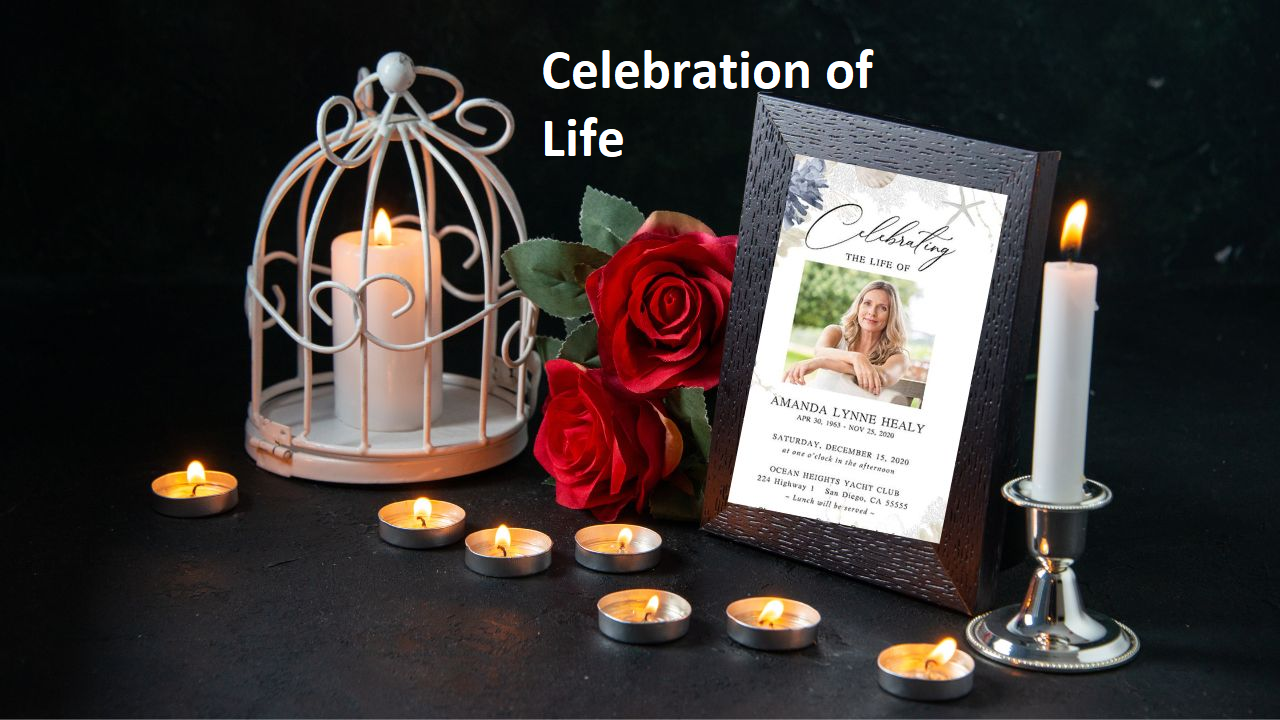A “celebration of life” is more than just a gathering. It is a heartfelt occasion designed to honor the essence of someone’s existence, reflect on the impact they made, and cherish the memories they leave behind. Unlike traditional funerals, which often focus on grief and solemn rituals, a celebration of life emphasizes joy, storytelling, and remembrance in a way that uplifts everyone present.
This modern approach to honoring loved ones has gained popularity across cultures because it offers comfort, meaning, and even healing. It gives families and friends the freedom to design an event that truly reflects the personality, passions, and legacy of the one being remembered.
In this article, we’ll explore what a celebration of life means, why it matters, how it differs from traditional ceremonies, and creative ideas to make it memorable.
Understanding the Celebration of Life
At its core, a celebration of life is about reflection. It is not limited to mourning a person’s passing; rather, it is a way to shine a light on the beauty of their journey. These gatherings can take many forms—formal events, intimate get-togethers, or even outdoor experiences in nature.
What makes this type of service unique is its focus on individuality. Instead of following strict customs, families design the event to reflect hobbies, passions, values, and achievements. It can include laughter, music, storytelling, and activities that symbolize who the person truly was.
The Meaning Behind the Celebration

Every person leaves behind a unique legacy, and the Celebration of Life is a way to acknowledge and honor that legacy. It brings focus to the memories that shaped their journey, the love they shared with family, friends, and community, and the inspiration they left behind for others. By sharing stories, recalling meaningful moments, and expressing affection, the gathering becomes a heartfelt reminder of how deeply someone touched the lives around them.
This approach offers comfort during times of grief by shifting the focus from loss to appreciation. It reminds everyone that although the physical presence of a loved one may be gone, their influence continues to live on. The values, lessons, and joy they spread remain as guiding lights, inspiring others to live with greater kindness, resilience, and purpose.
Celebration of Life vs. Funeral
Though both occasions serve to honor a loved one, the differences between them are significant. Funerals are generally solemn, focusing heavily on mourning and tradition. They are most often held in religious or ceremonial spaces and tend to follow structured rituals that provide a sense of closure for those in attendance.
In contrast, a celebration of life is lighter, more uplifting, and centered on joy. These gatherings can be hosted anywhere meaningful, such as gardens, homes, or community centers. The format is flexible and creative, shaped entirely by personal preferences. Instead of focusing only on grief, the purpose is to inspire reflection on positive memories, shared love, and the lasting impact of the one being remembered.
Why People Choose a Celebration of Life
The growing preference for these ceremonies reflects a shift in how people view remembrance. Many wish to be honored in ways that reflect their true spirit rather than just their passing. Families are drawn to this approach because it allows for a more personal and customized farewell, creating a space that feels authentic and meaningful.
Celebrations of life also provide comfort by filling the atmosphere with warmth, laughter, and cherished memories. With flexibility in planning and the inclusion of storytelling, music, and other personal touches, these gatherings ease the burden on grieving families. Instead of dwelling solely on loss, they transform sadness into a shared celebration of everything that made the individual unique.
Planning a Celebration of Life
Planning such an event requires thoughtful attention to detail. While there are no strict rules, certain steps help ensure the occasion captures the essence of the loved one.
Choosing the Location
The venue should reflect personality. A nature lover might be honored in a park or beach setting. An artist may be celebrated in a gallery space. For someone who cherished family gatherings, a backyard or living room may feel most fitting.
Designing the Atmosphere
The mood can range from casual to formal, depending on preference. Some families choose music that their loved one enjoyed, decorate with favorite colors or flowers, and even prepare meals inspired by their favorite recipes.
Involving Family and Friends
Inviting people to share stories, poems, or memories creates a sense of collective healing. Some families create memory boards, videos, or slideshows that highlight important moments.
Creating Keepsakes
Guests may be given tokens such as photos, handwritten notes, or items that symbolize the person’s life. These keepsakes serve as lasting reminders of the occasion.
Creative Ideas for a Celebration of Life
A celebration of life opens the door to endless possibilities for creativity, giving families the chance to design moments that reflect the individuality of their loved one. Some may choose memory tables filled with photos, mementos, and personal items that highlight different stages of life. Others may incorporate music and dance by playing favorite songs or organizing performances that capture the person’s spirit. Story circles are another meaningful addition, where guests gather to share anecdotes that bring warmth and connection.
Families also find meaning in charitable tributes, such as supporting a cause that was close to the individual’s heart, or by adding natural elements like planting trees, releasing lanterns, or planning hikes in their honor. Creative expressions through painting, writing, or crafts can also be part of the event, reflecting passions that defined their journey. Each of these ideas creates a heartfelt environment where joy, memory, and love intertwine to honor a life well lived.
Emotional Impact of a Celebration of Life
The emotional benefits of these gatherings are profound. Unlike traditional funerals that often center on grief, a celebration of life brings balance by offering hope, perspective, and healing. For families, it creates a space where they feel supported, loved, and connected to a wider community. Friends also gain an outlet to share stories, exchange memories, and preserve bonds that remain strong even after loss.
For children, these events provide a gentle introduction to remembrance, showing them that honoring someone’s life can be uplifting rather than frightening. In this way, celebrations of life become important milestones in the grieving process. They mark not only the sorrow of loss but also the joy of having known and loved someone deeply, allowing memories to shine brighter than sadness.
Cultural and Spiritual Variations
Different cultures approach celebration of life ceremonies in diverse ways. Some traditions naturally embrace joyous remembrance, while others are gradually adapting to the concept. In many places, music and dancing are central to honoring the departed, creating an atmosphere of energy and connection. In other cultures, storytelling and shared meals play an essential role, turning the gathering into a time of reflection and togetherness.
Spiritual perspectives also shape these occasions, often incorporating prayers, blessings, or rituals that blend tradition with celebration. This adaptability makes the idea of celebrating life universal. Whether religious or non-religious, casual or ceremonial, each event can be tailored to reflect the values and spirit of both the loved one and their family, ensuring authenticity and meaning.
The Healing Power of Storytelling
One of the most powerful aspects of a celebration of life is storytelling. Sharing personal memories transforms the event from a gathering into an experience of connection.
Stories remind people of quirks, achievements, and even imperfections that made the individual human and deeply loved. They highlight not only who the person was, but also how they influenced the lives of others.
For many families, hearing laughter and joy in these moments becomes a source of comfort. The act of storytelling becomes part of the healing journey.
The Role of Legacy
A celebration of life doesn’t end when the event itself is over. The stories shared, the activities created, and the emotions expressed continue to ripple forward in the lives of those left behind. In this sense, the gathering becomes more than a moment of remembrance—it plants seeds of inspiration that carry into everyday living.
The legacy of a loved one can take many forms, from inspiring kindness and compassion to motivating others to pursue their passions and dreams. It may strengthen family traditions or encourage greater involvement in community and charitable work. In this way, the celebration evolves into more than a memory of the past; it becomes a guiding light that shapes the future with purpose and meaning.
How to Personalize the Experience
Personalization is at the heart of a meaningful celebration of life. Families often add thoughtful touches that highlight the individuality of the person being remembered. Some choose themes centered on favorite hobbies such as sports, travel, or gardening, while others design menus that feature beloved dishes or meals inspired by cultural heritage. Music also plays a powerful role, with playlists crafted to reflect different stages of the person’s journey.
Interactive activities bring even more connection to the gathering, whether through letter writing, sharing quotes, or contributing to a memory book filled with stories and reflections. These personal touches transform the event into something far more significant than a simple gathering—they create an authentic representation of a life well lived, filled with joy, meaning, and love.
Modern Trends in Celebrations of Life
As society continues to evolve, so do the ways people choose to honor their loved ones. Virtual gatherings have become popular, allowing distant friends and family members to participate in memorials from anywhere in the world. Eco-friendly celebrations are also on the rise, with families opting for sustainable practices such as planting trees or using biodegradable materials to leave a positive impact on the environment.
Creative approaches are shaping modern remembrance as well, from video montages and digital guest books to live-streamed ceremonies that reach wider circles. Some families even plan themed celebrations inspired by passions like music, travel, or cultural traditions. These trends highlight that honoring a life can be both modern and timeless, adapting to personal values while keeping the essence of remembrance alive.
The Long-Term Value of Celebrations of Life
Beyond the immediate healing, these ceremonies leave lasting impressions. They encourage deeper bonds among family and friends while fostering gratitude for the time shared with loved ones.
In years to come, the memories of the celebration itself become part of the legacy. Guests often recall the warmth, stories, and laughter as much as they do the individual being honored.
The celebration becomes a milestone that strengthens community ties and affirms the importance of living fully.
Conclusion
A celebration of life is more than an event—it is an act of love, remembrance, and gratitude. By focusing on joy rather than sorrow, it uplifts those left behind while honoring the unique essence of the one remembered.
Whether through music, storytelling, creative activities, or shared meals, these gatherings offer a profound reminder that life, no matter how brief, leaves an eternal mark.
The growing popularity of celebrations of life reflects a universal truth: love and memory outlast time, and honoring them with joy brings healing and connection.





